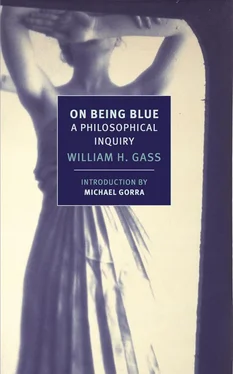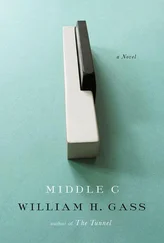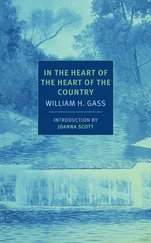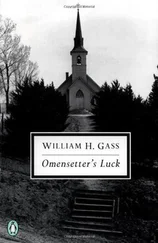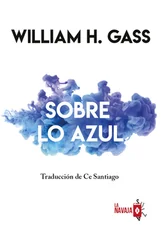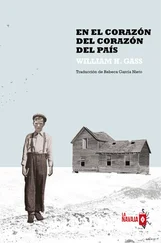Thomas Reid, a Scot who not only believed in common sense but used it, wrote with some exasperation once that
Every man feels that perception gives him an invincible belief of the existence of that which he perceives; and that this belief is not the effect of reasoning, but the immediate consequence of perception. When philosophers have wearied themselves and their readers with their speculations upon this subject, they can neither strengthen this belief, nor weaken it; nor can they show how it is produced. It puts the philosopher and the peasant upon a level; and neither of them can give any other reason for believing his senses, than that he finds it impossible for him to do otherwise. ( Essays on the Intellectual Powers of Man )
Still, every one of these diligent gentlemen may be right… and why should we mind if every one of them is right simultaneously? Let all notes sound together and cacophony be king.
There are particular pieces of the world which essentially serve the abstract (dominos, for instance, standing armies, monetary prose), and there are fragments of the mind which nevertheless pretend to be (like men of good will and the data of sense) residents in the realm of things. It is around these coins, twin-headed and treacherous, that the quarrel which concerns us has centered, for there is clearly a similar conflict between the way we customarily experience color and the way we have historically tended to think about it. This unnecessary antagonism is traditional: shall we believe our senses or our reason? And reason is so swift to slander the senses that even Hume did not escape, replacing shadow, mood and music, iris and jay, with a scatter of sense impressions artificial as buttons: each distinct, inert, each intense, each in self-absorbed sufficiency and narrowly circumscribed disorder like a fistful of jelly beans tossed among orphans or an army of ants in frightened retreat.
The blunt truth is that if the sky’s not blue, the sea, the serge suit, the chicory, the blue goose; if they’re not blue, then, like our ears and nose and tongue and fingers, our eyes have lied, and although on occasion the truth may be beaten from them, they cannot be a standard; they have soiled consciousness too continuously; they cannot be trusted. If, on the other hand, we begin with what we’re given, then what about all those advisers who have whispered persuasive nonsense in our ears from the beginning? don’t believe what you hear — the violin, the wind — believe me; others feel differently, in other ages, different climes; even yourself — on grayer days, at greater distances, in sickness, out of madness, during dream — distort — from pique, from spite, from wine; remember the shadows which threatened you like a thief? the friend you greeted like a stranger? the lap dog’s bite? the lips which claimed to be so sweet? so don’t believe the rainbow or the oil, but believe the lines the mind conceives connect the spill and bow to you; believe in the weights of spaces and the rush of quantity through the void. Well? what to do? For their treachery, for the buttered sound of their sophistries, shall we confine them to the tower?
Choose.
• • •
We might suppose that connoisseurs and critics of painting, certainly the painters themselves, would be better disposed to blue than the physicists and philosophers — that’s a natural thought — and we might expect many of them to think of shape as a qualification of color, or colors as contents whose limits were created simply to contain them, like thick cream curdling in a bowl (because who looks at the basket when it’s heaped with berries?) — yes, that’s a thought natural enough — but you also might expect writers to love their words (does not Krapp cry out ‘spooooool’ to the unrecorded walls of his room?), although the truth is that what they usually want is whatever their words represent (the things, not the thoughts, the things, not the sounds, the things, not the snicker and giggle of ink or the rumple of sentences like slept-in pajamas — no, only things, dear things, sweet things… and then only those things things designate, the way work means money and money downpays the car and cars confer status and status is power and power converts to cash), just as painters have for centuries carefully colored between the lines, lines which everyone read as the edges of objects, of things, though the color of those things, the mantle of the Virgin, for instance, sometimes gave them a special meaning.
Yes, once blue signified, not sky, but Heaven, against which the figures of the gods burned like suns. Off and on it stood for the great outdoors, the container of all those usefully precious and precarious things; it was the space of spaces, the big Big Sky, and blue would flow into rooms through windows or surround soldiers, tall trees, towns, a flagellated Christ, with Greek, Venetian or Egyptian light as clean and final as a fluttering cape or goodbye shawl. Occasionally it darkened like a pit in which the world was thrown, or now and then it threatened us with the come-hither recessions of its vertiginous deeps, and we were small and incomplete before it as men had been in earlier times before their mountain-dwelling divinities.
Seldom was blue for blue’s sake present till Pollock hurled pigment at his canvas like pies. Rarer still, since such sensitivity in the brush tip is a rarity (in the penis rarer, in the poet rarest of all), color became the breath of bodies, every hue the aching limit of a life, as if it rose up from within the substance it covered the way feeling changes the color of the chameleon, or like those remarkable cephalopods whose configurations alter with their moods, or as, inadequately, our own blood comes and goes like sunshine dreaming among moving clouds.
Consequently, there is not only filmy cover-color like fur and clothing, as Adrian Stokes suggests, or color which leaps from things like sparks from hammered spikes or sifts through the atmosphere like dust or crowds near the eye like a swarm of gnats, in contrast to objects which appear self-lit, but the surfaces of painted figures can be so utterly replaced by passion that each shade and contour seem to be the inside brought to light at its own urging, as sexuality is seen sometimes through swelling and congestion.
So — in short — color is consciousness itself, color is feeling, and shape is the distance color goes securely, as in our life we extend ourselves through neighborhoods and hunting grounds; while form in its turn is the relation of these inhabited spaces, in or out or up or down, and thrives on the difference between kitchen and pantry. This difference, with all its sameness, is yet another quality, alive in time like the stickiness of honey or the gently rough lap of the cat, for color is connection. The deeds and sufferings of light, as Goethe says, are ultimately song and celebration.
Praise is due blue, the preference of the bee.
But how many critics mimic Aristotle instead, although Aristotle’s eyes were always in his reason: ‘… in painting: if someone should smear the picture with the most beautiful colors, but at random, he would not please us as much as if he gave us a simple outline on a white ground.’ The Philosopher has his thumb on the scales. Which is more likely to hold our interest, he should have asked: beautiful colors laid on randomly, or any delicately graven scribble? because, to be fair, line should be matched against color, not color against outline. The unity of an outline is derivative anyway, borrowed from the object it presumably limns, and that unity may be quite imaginary. What unifies the shape of a typed ‘t’ but function and familiarity? There is none in the mark itself. A color’s unity is inherent, however, since it is continuously, insistently, indivisibly present in what it is. Furthermore, every color is a completed presence in the world, a recognizable being apart from any object, while a few odd lines (since a line is only an artificial edge), a few odd lines are: nothing — thin strings of hue… and what of that white ground Aristotle asks for? deny him that and give him a black base for a white design instead… then perhaps violet with green… chartreuse with red, so he can see how character comes and goes with color.
Читать дальше
